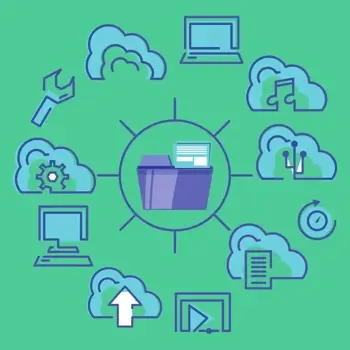What Is QoS (Quality of Service)?
When your computer network gets high traffic, you must prioritize good connections. This is one of the areas of work for Quality of Service (QoS). QoS manages network resources by setting priorities for data traffic transmission on a network. In this article, we'll examine QoS, how it works, and its importance.
What is QoS?
QoS, meaning Quality of Service, is a set of technologies used to manage network resources and prioritize different types of traffic across a network. It encompasses factors like availability, reliability, scalability, security, performance, and responsiveness.
Historically, different forms of traffic traveled on separate physical networks. Each network handled a specific type of traffic with the necessary quality. For example, one network handled phone calls, ensuring uninterrupted communication, while another handled data like emails and web browsing.

Today’s network traffic is digitized. We use unified, packet-based networks where all types of traffic - voice, video, and data - share the same infrastructure and resources. These networks operate on a "best-effort" basis. This means they try to deliver all traffic as efficiently as possible but don't inherently guarantee any specific level of quality.
Yet users still expect high-quality services without delays. Enterprise networks use Quality of Service mechanisms to meet these expectations. Quality of Service networks pass a lot of traffic from Point A to Point B based on service contracts and the performance requirements of all the applications generating the traffic.
The main goal is to prioritize more important traffic over less important traffic. Running a large network without QoS is perfectly normal. However, if your business has traffic sensitive to delays, implementing this technique will result in a good end-user experience (UX).
Organizations employ various tools and techniques, such as traffic shaping, priority queuing, and jitter buffers, to achieve QoS. In fact, many organizations include Quality of Service in their service-level agreements (SLAs) with network service providers to guarantee a specific level of network performance.
How QoS works
The purpose of QoS is to manage outbound traffic to achieve optimal bandwidth usage. It decides what traffic will be allowed to pass first and which traffic will be dropped to ensure smooth transmission.
Quality of Service network technology is a way to navigate congested traffic conditions. When data is sent over a network, it is divided into smaller units called packets. Each packet includes control information such as the source and destination addresses, protocol details, and sequence numbers.
The main components of Quality of Service in networking are classification, queuing, and bandwidth management.
QoS operates by first classifying packets based on the type of service they require to determine their priority for bandwidth allocation.
The classification process involves examining the packet header, which contains crucial instructions about the data. Once classified, the packets are marked to indicate their priority level.
Networking devices, like routers and switches, are then configured to create queues that handle packets according to their assigned priority. This system ensures that high-priority packets, such as those for most critical applications, have the necessary bandwidth.
Queuing and bandwidth management are essential Quality of Service mechanisms that manage the flow of packets based on their classification.
QoS measurements and parameters
Organizational network administrators use various parameters to measure QOS quantitatively, depending on the objective. The metrics are packet loss, latency, jitter, and bandwidth utilization.
Packet loss
Packet loss refers to the data packets that fail to reach their destination during transmission. This occurs during periods of high traffic volume when network devices like routers become overloaded.
Each router has a buffer that temporarily holds packets waiting for processing. If the buffer reaches capacity due to a surge in traffic, the router cannot process incoming packets, resulting in their loss.
In such situations, the destination device may request the source to resend the missing packets, a process known as TCP retransmission. But it is not suitable for real-time applications like video calls or Voice over IP (VoIP), where delays can lead to lost images or sounds.
Latency
Also known as delay, latency refers to the time it takes for a data packet to travel from its source to its destination. Several factors contribute to this delay:
- Queuing delay. When packets wait in a router's buffer, they experience queuing delay. This delay is particularly noticeable during high network traffic when packets are lined up for processing.
- Processing delay. This is when a router needs to analyze a packet's header and determine its next destination. The complexity and speed of the routing device can impact this delay.
- Serialization delay. This delay refers to the time required for the router to place the packet onto the transmission medium, such as a fiber-optic cable or wireless signal.
- Propagation delay. Propagation delay is the time it takes for a data packet to travel across a transmission medium to reach the next network hop. It depends on the medium's physical properties and the distance between network nodes.
Jitter
Jitter is the variation of delay between packets in the same data stream. Inconsistent packet arrival times can cause problems in applications that require a steady stream of data.
Too much jitter is particularly problematic for voice and video communication or online gaming. These are real-time applications where timely data delivery is a priority.
Bandwidth
Bandwidth measures how much of the available network capacity is used during data transmission. It is measured in megabytes per second (Mbps).
QoS helps optimize bandwidth utilization by allocating resources effectively. The protocol ensures that high-priority applications receive more bandwidth and capacity than others.
Throughput
Throughput measures the rate at which data is successfully transmitted from one point to another in a network. High throughput is essential for applications that require large amounts of data to be transferred quickly.
QoS techniques
Businesses use several QoS techniques to manage traffic quality as per requirements specified in SLAs. They are:
- Traffic shaping, which controls the flow of data into a network to ensure it does not become congested. Shaping regulates the rate at which data travels, preventing packet loss.
- Traffic policing, which monitors the data entering a network and enforces policies to ensure traffic conforms to predefined rules. The procedure marks traffic that exceeds the allowed limits as lower priority.
- Priority queuing, which assigns different priority levels to different types of traffic. High-priority traffic, such as VoIP and video conferencing, receives preferential treatment over lower-priority traffic. That way, critical applications receive the necessary resources.
- Resource reservation reserves a portion of the network's resources for specific types of traffic. By guaranteeing a low latency for critical applications, resource reservation helps maintain their reliability.
Types of QoS
The three main QoS models are best-effort services, differentiated services (DiffServ), and integrated services (IntServ).
Best-effort service model
The Internet was initially based on a best-effort packet delivery service. Best-effort is the default mode for all traffic. In this model, there’s no differentiation among types of traffic with no prioritization or guarantees of service.
It is similar to using standard mail service – it will get there when it gets there.
Differentiated services (DiffServ)
DiffServ is designed to overcome the limitation of best-effort and IntServ models. The DiffServ model identifies network traffic by classes, and network QoS policy enforces differentiated treatment of traffic classes. You choose the level of service for each class.
Integrated services (IntServ)
IntServ is older than the QoS differentiated services model. This type defines a signaling process by which an individual flow can request that the network reserve the bandwidth and delay needed for the flow.
The integrated services model uses RSVP for reserving bandwidth – a resource reservation protocol for reserving QoS tools for a particular flow.
The limitation of the IntServ model is that if reserved, no other traffic can use it. Each flow requires a separate admin configuration on the router.
How to implement QoS
Implementing QoS involves a series of carefully planned steps to ensure assure optimal network performance.
- Prepare. In the preparation process, organizations gain a comprehensive understanding of each department's service needs and requirements. This involves identifying critical applications, services, or devices that require priority access to network resources.
- Design. Here, the user must consider significant software and hardware changes within the network architecture. They apply the chosen QoS model to the specific network infrastructure, ensuring that critical applications receive the necessary resources.
- Test. The testing phase is responsible for the stability of QoS settings and policies. Organizations should conduct tests in a controlled environment. Thorough testing helps validate the QoS implementation before deployment.
- Implementation. During this phase, organizations should roll out QoS policies in a phased manner. They may choose to implement policies by network segment or focus on specific Quality of Service functions. This incremental approach allows organizations to monitor the impact of Quality of Service on different parts of the network.
- Monitor. Once Quality of Service policies are deployed, ongoing monitoring is essential to evaluate performance and make necessary adjustments. Organizations need to analyze data regularly to identify areas for improvement.
Benefits of QoS
Quality of Service offers several key benefits for organizations. Primarily, it ensures the efficient transfer of data across the network. Network administrators use QoS to manage network traffic more effectively. Organizations see it as a way to prevent congestion and optimize bandwidth usage.
It addresses many network problems, such as congestion, latency, and connection quality. It does so by minimizing the degree of packet loss and dynamically allocating resources to key applications.
Challenges and limitations of QoS
QoS in a network can be challenging due to various factors, including the complexity of the mechanisms involved. QoS mechanisms can be complex to configure and manage, requiring specialized expertise. Furthermore, maintaining QoS can become increasingly difficult as networks evolve. It requires additional hardware and software and ongoing maintenance.
In heterogeneous networks, ensuring that QoS mechanisms work seamlessly across different devices and network segments is labor-intensive. This makes it an unideal choice for some.
Real-world applications of QoS
Many common services require QoS. QoS provides clear voice communication for Voice over IP (VoIP) services. VoIP relies on transmitting voice data over the Internet, which requires high reliability.
Video conferencing is another application that significantly benefits from QoS. In video calls, both video and audio data must transmit simultaneously to allow participants to communicate effectively.
Finally, streaming services, such as Netflix and YouTube, depend on QoS to deliver high-quality video content without buffering. With QoS deployment, users expect seamless playback.
What is the future of QoS?
New technologies are emerging day by day. We expect the importance of QoS to increase. Some trends likely to impact the future of QoS include the rollout of 5G networks, which is expected to significantly improve network performance with QoS, and the proliferation of IoT devices, which is expected to increase the demand for QoS.
Additionally, as more services and applications move to the cloud, ensuring QoS for cloud-based services will become increasingly important. We also expect the use of AI and machine learning in network management to improve the effectiveness of QoS mechanisms.
Frequently asked questions
What is the difference between QoS and CoS (Class of Service)?
CoS is a concept related to QoS. It, however, does not guarantee specific bandwidth levels and uses a less-granular traffic control approach.
Can QoS be implemented on a home network?
Yes, QoS set on a home network prioritizes traffic. It improves performance for specific applications like gaming.
Is QoS necessary for online gaming?
Gamers require low latency for their actions to be accurately reflected in the game. That’s where QoS comes in as the sauce to deliver a responsive experience.
What is a QoS router?
A Quality of Service router is one that prioritizes traffic in such a way that more important traffic can pass through first. This helps improve the quality and performance of high-importance traffic.

